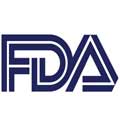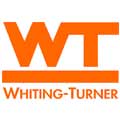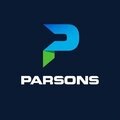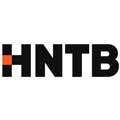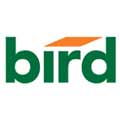The site development industry, also known as site preparation, refers to the process of preparing a piece of land for construction. This process involves a wide range of activities, including grading, excavation, erosion control, site utilities, and paving. Site development is an essential part of any construction project, as it lays the foundation for the entire project. GAO RFID Inc., one of the global top 10 RFID leaders, is based in the cities of New York and Toronto and it has deployed many RFID, BLE, and IoT projects in the site development industry.
GAO RFID Systems & Hardware for the Site Development
GAO RFID Inc. offers the largest selection of BLE gateways, BLE beacons, RFID readers, tags, antenna, printers, and integrated RFID systems for various industries, including site development industry.
BLE (Bluetooth Low Energy)
GAO offers advanced BLE gateways:
as well as versatile beacons with such important functions as temperature, humidity, vibration, and panic button:
- IP67 Rated BLE 2.45GHz Active RFID Wristband Tag w/ Panic Button
- BLE 2.45GHz Ultra Rugged Active RFID Pallet Tag/Beacon
- BLE 2.45GHz Active RFID Asset Tag/Beacon
GAO’s BLE technology is suitable for all kinds of industries, including site development.
UHF (Ultra High Frequency) RFID
GAO offers the largest selection of UHF RFID readers for various industries, including site development:
GAO RFID offers the widest choice of UHF RFID tags, labels, badges, wristbands for various industries, including the site development:
and an array of antennas to address different applications:
HF (High Frequency), NFC (Near Field Communications) and LF (Low Frequency) RFID
GAO offers the largest selection of HF, NFC, and LF RFID readers for various industries, including the site development:
- 134.2KHz ISO11784/5 FDX RFID Plug and Play Portable Reader
- 134.2 kHz LF Long Range Fixed RFID Reader
HF, NFC and LF RFID tags, labels, badges, wristbands for various industries, including site development:
and antennas:
GAO also offers RFID printers:
Digital I/O adapters:
and relay controllers:
For embedded applications, GAO offers UHF, HF and LF RFID reader modules:
- UHF 860 – 960 MHz RFID Modules
- 13.56 MHz High Frequency RFID Modules
- 125 kHz Low Frequency RFID Modules
The RFID systems by GAO are highly popular for clients in roofing and siding:
People or workers tracking system:
Physical asset or operational equipment tracking system:
- GAO RFID Heavy Duty Machinery Asset Management System
- GAO RFID Construction and Industrial Machinery Rental Asset Management System
- Tool & Industrial Equipment Tracking System
- Asset Tracking Software
Personnel or people access control system:
Parking or vehicle control system:
There are two versions of GAO’s software, one is running on local server, and another running in the cloud.
Benefits of GAO’s RFID, BLE, IoT & Drones for site development
RFID, BLE, IoT and drones technologies from GAO RFID Inc. offer many benefits for the site development:
Applications and Benefits of applying RFID to the site development
- Improved efficiency: GAO RFID tags can be used to quickly and easily track the location of fireproofing material, cranes,, concrete mixers, and tools like saws, hammers, and grinders, reducing the time spent searching for these items.
- Site security: Our RFID solutions can be used to monitor site access and prevent unauthorized personnel from entering the construction site. This can improve safety and security on the site, reducing the risk of theft or accidents.
- Time and attendance tracking: GAO’s RFID products can be used to track the attendance and work hours of workers on the construction site, reducing the risk of time theft and ensuring accurate record-keeping.
Applications and Benefits of applying BLE technology to the site development
- Long-range tracking: GAO BLE products have a much longer range of up to 300 meters, making it ideal for tracking cranes, concrete mixers, tools like saws, hammers, and workers, labors, and engineers over a large construction site.
- Asset tracking: GAO’s RFID products can be used to track equipment and materials (bulldozers, excavators, and cranes) on construction sites, reducing the time and effort required to locate them. This can improve project efficiency and reduce costs associated with lost or stolen equipment.
- Access Control: GAO BLE beacons wirelessly transit credentials so that workers can be granted/restricted access by our gateways.
Applications and Benefits of applying combination of RFID and IoT for the site development
- Predictive maintenance: IoT sensors can be used to monitor the condition of equipment and materials, allowing site managers to schedule maintenance and repairs before equipment fails.
- Real-time monitoring: Our RFID tags and IoT can be used to monitor construction activities in real time, allowing site managers to quickly identify and resolve any issues that arise.
- Environmental monitoring: IoT sensors can be used to monitor air quality, noise levels, and other environmental factors on the construction site. This can help construction companies comply with environmental regulations and ensure the health and safety of workers.
- Inventory management: GAO RFID products and IoT sensors can be used to track inventory levels, allowing site managers to quickly and easily identify when supplies are running low and need to be replenished. This can prevent delays in the construction process and reduce the risk of running out of critical materials like steel, copper, or cement.
Applications and Benefits of applying combination of RFID and Drones for the site development
- Site surveying: Drones equipped with our RFID readers can be used to survey construction sites and collect data on the location and status of cranes, bulldozers, drilling machines, etc., and materials. This can help site managers plan and optimize the layout of the site, reducing the risk of delays and improving project efficiency.
- Asset tracking: GAO’s RFID tags can be attached to equipment and materials like steel, lumber, and concrete on the construction site, allowing drones to quickly and easily locate them. This can reduce the time and effort required to locate them and improve project efficiency.
- Safety inspections: Drones can be used to inspect hard-to-reach or hazardous areas of the construction site, reducing the risk of accidents and injuries. Our RFID solutions can be used to identify and track potential safety hazards, allowing site managers to quickly address them before they become a problem.
GAO Helps Customers Comply with Standards, Mandates & Regulations of the Site Development
GAO RFID Inc. has helped many companies in the site development industry to deploy RFID systems and to ensure such deployments complying with the applicable industry standards, mandates and government regulations:
- Construction Specification Institute (CSI): This is a standardized system for organizing construction project information. It includes a section on “Identification” that specifies the use of RFID tags to identify construction materials, components, and equipment.
- Clean Water Act (CWA): The CWA regulates the discharge of pollutants into U.S. waters, including wetlands and other water bodies that may be impacted by site development activities.
- National Environmental Policy Act (NEPA): NEPA requires federal agencies to consider the environmental impact of proposed projects, including site development projects, and to involve the public in the decision-making process.
- Occupational Safety and Health Administration (OSHA): OSHA sets and enforces safety standards for the workplace, including construction sites. Site development companies must comply with OSHA regulations to ensure the safety of their workers.
- Americans with Disabilities Act (ADA): The ADA requires businesses to make their facilities accessible to people with disabilities. This may include accessibility features in site development projects, such as ramps and other accommodations.
- Canadian Environmental Protection Act (CEPA): CEPA regulates the use of hazardous substances and the disposal of waste, which can be relevant to site development projects.
- Canadian Environmental Assessment Act (CEAA): CEAA requires federal agencies to assess the environmental impacts of proposed projects, including site development projects, and to consider the input of Indigenous communities and the public.
- Occupational Health and Safety Regulations (OHSR): The OHSR sets and enforces safety standards for the workplace, including construction sites. Site development companies must comply with OHSR regulations to ensure the safety of their workers.
GAO’s Software Provides API
GAO’s popular RFID software such as personnel tracking, asset tracking. access control, parking system control offers a free trial and offers an API to each of the common software in the site development industry:
Personal Management
- Recruiting and hiring new employees: Recruiting and hiring new employees is a critical aspect of personnel management in any industry, including the site development industry.
- Training and developing employees: Training and developing employees is another important aspect of personnel management.
- Creating schedules and managing employee time-off requests: creating schedules and managing employee time-off requests is another important aspect of personnel management.
Equipment Management
- Maintaining and repairing equipment: Maintaining and repairing equipment is an important aspect of equipment management.
- Monitoring equipment usage and performance: Monitoring equipment usage and performance is an important aspect of equipment management.
- Planning and scheduling preventative maintenance: Planning and scheduling preventative maintenance is an important aspect of equipment management.
Supply Chain Management
- Identifying and selecting suppliers: Identifying and selecting suppliers is an important aspect of supply chain management.
- Managing relationships with suppliers: Managing relationships with suppliers is a critical aspect of supply chain management.
- Monitoring supplier performance and quality: Monitoring supplier performance and quality is a critical aspect of supply chain management.
Other Application Software
- Project management and planning: Identifying and selecting suppliers is an important aspect of supply chain management.
- Budgeting and financial management: Budgeting and financial management are important aspects of overall management.
- Risk management and safety planning: Risk management and safety planning are critical aspects of overall management.
Case Studies of RFID Applications
The MBTA implemented an RFID-based inventory management system for the construction of the Green Line Extension project in Boston. The system used RFID tags attached to construction materials, which were scanned by RFID readers located throughout the construction site. The system provided real-time information on the location and status of each asset, allowing the contractor to track the movement of construction materials throughout the site, reducing the risk of theft and loss, and improving inventory management.
Here is another case study of the San Francisco Public Utilities Commission (SFPUC): The SFPUC used an RFID-based tracking system for the construction of a water treatment plant in San Francisco. The system used RFID tags attached to equipment and tools, which were scanned by RFID readers located throughout the construction site. The system provided real-time information on the location and status of each asset, allowing the contractor to track the movement of equipment and tools throughout the site, reducing the risk of theft and loss, and improving the efficiency of the construction process.
GAO Has Served the Site Development Extensively
GAO RFID Inc., a global top 10 leader in RFID, has served many leading companies in the site development industry, including its various divisions such as
- Land Development: This division involves the acquisition, planning, design, and development of land for residential, commercial, or industrial purposes
- Construction: This division involves the physical construction of buildings, infrastructure, and other structures on the developed land. It includes activities such as excavation, grading, paving, electrical and plumbing work, and building construction.
- Surveying: This division involves the measurement and mapping of land and its features, including topography, boundaries, and infrastructure. It includes activities such as land surveying, geodetic surveying, and hydrographic surveying.
- Environmental Consulting: This division involves the assessment and management of environmental risks and impacts associated with land development and construction projects.
List of the leading companies in the Site Development Industry in the U.S.
List of the leading companies in the Site Development Industry in Canada







